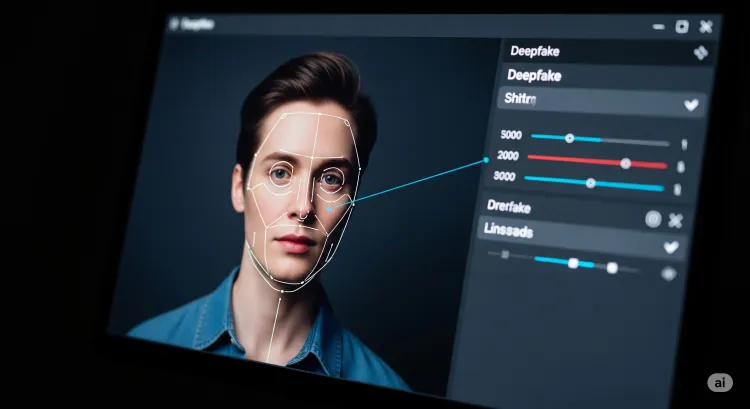What are the best ways to detect and stop AI-driven cyberattacks like deepfakes, fake recruiters, and cloned CFOs in real time?
AI-driven attacks are rapidly evolving, using technologies like deepfakes, voice cloning, and synthetic profiles to deceive employees and executives. To combat these threats in real time, organizations must deploy advanced detection tools such as deepfake scanners, voice biometrics, and behavioral monitoring systems. Multi-factor authentication, strict verification protocols, and employee training are essential to detect anomalies, prevent social engineering, and respond swiftly. This approach blends AI-powered defense with human vigilance to secure organizations against sophisticated, real-time attacks.

Table of Contents
- Understanding AI-Driven Attacks: The New Cyber Threat Landscape
- What Are Deepfakes and How Are They Used in Cyberattacks?
- The Rise of Fake Recruiters and Job Scams Powered by AI
- CFO Voice Cloning and Executive Impersonation
- Comparison of Common AI-Driven Attacks
- How to Detect and Stop AI-Driven Attacks in Real Time
- Real-Time Protection Tools to Combat AI Threats
- Summary Table
- Frequently Asked Questions (FAQs)
AI is powering a dangerous new wave of cyberattacks. From deepfake videos impersonating CEOs to fake recruiters targeting job seekers, attackers are using advanced AI tools to trick individuals and compromise businesses. In this blog, we’ll break down how these attacks work, show you real-world examples, and most importantly—explain how to detect and stop them in real time.
Understanding AI-Driven Attacks: The New Cyber Threat Landscape
AI-driven cyberattacks are not just science fiction anymore—they’re happening now, in real time, targeting global corporations and unsuspecting individuals alike. Attackers use AI to automate phishing, voice clone high-level executives, create deepfake videos, and fabricate job opportunities to gain trust and access.
What Are Deepfakes and How Are They Used in Cyberattacks?

Deepfakes are synthetic media created using AI, usually video or audio, that imitate real people. In cybercrime, deepfakes are used to:
-
Impersonate CEOs or CFOs to authorize fake fund transfers.
-
Fool employees during video calls with a cloned face.
-
Spread misinformation about a brand or organization.
Real-World Case:
In 2023, cybercriminals used a deepfake of a company’s CEO during a Zoom call to instruct a finance employee to transfer $25 million.
The Rise of Fake Recruiters and Job Scams Powered by AI
AI-generated recruiter profiles are increasingly being used on platforms like LinkedIn to:
-
Lure job seekers into malware-infected tests or application portals.
-
Collect personal data and resume info for future phishing.
-
Trick candidates into installing "onboarding" spyware.
These scams are almost impossible to detect at a glance due to the realistic language and imagery generated using AI.
CFO Voice Cloning and Executive Impersonation
Voice cloning tools allow attackers to create nearly perfect replicas of someone’s voice using just a few seconds of audio. Threat actors use these tools to:
-
Call lower-level finance teams posing as CFOs or VPs.
-
Urge urgent financial transfers or the disclosure of sensitive data.
-
Leave voicemails that sound completely legitimate.
Comparison of Common AI-Driven Attacks
| Type of Attack | Target Audience | Common Tactics | Risk Level | Detection Tips |
|---|---|---|---|---|
| Deepfakes | C-level execs, finance | Video impersonation, fake Zoom meetings | Very High | Look for facial syncing issues, metadata |
| Fake Recruiters | Job seekers, HR | AI-written job offers, malware PDFs | High | Verify domain, company, recruiter profile |
| Voice Cloning (CFOs) | Finance departments | Impersonation calls, urgent requests | Critical | Call back using known numbers, record call |
How to Detect and Stop AI-Driven Attacks in Real Time
1. Deploy Real-Time Deepfake Detection Tools
Modern cybersecurity tools now use machine learning to analyze video/audio metadata and spot anomalies like unnatural blinking, mismatched shadows, and background inconsistencies.
2. Enable Voice Biometrics
Voice biometric systems analyze vocal characteristics beyond tone—like pitch, cadence, and frequency—making cloned voices easier to detect even if they sound identical.
3. Verify Identity Through Multi-Factor Authentication (MFA)
Never rely solely on voice or video. Always use a second form of verification:
-
Call-back via known numbers
-
Internal communication apps
-
MFA via apps like Google Authenticator or Duo
4. Monitor for Anomalous Behavior with AI
AI-based SIEM (Security Information and Event Management) tools can detect:
-
Sudden changes in login location
-
Irregular hours of activity
-
Unusual financial access requests
5. Train Employees to Recognize AI-Based Threats
Cybersecurity awareness training must now include:
-
Spotting deepfakes
-
Recognizing GPT-style writing
-
Verifying executive requests carefully
Real-Time Protection Tools to Combat AI Threats
Here are some tools and solutions actively used to mitigate AI threats:
| Tool Name | Functionality | Real-Time Use |
|---|---|---|
| Deepware Scanner | Detects AI-generated videos and deepfakes | Yes |
| Symbl.ai + VoiceShield | Detects voice cloning and impersonation | Yes |
| Abnormal Security | Detects AI phishing and suspicious behaviors | Yes |
| Microsoft Defender XDR | AI-driven behavior monitoring across endpoints | Yes |
Conclusion: AI Is the Weapon—But It Can Also Be the Shield
Cybercriminals are embracing AI, but so are defenders. By integrating real-time monitoring, deepfake detection tools, voice verification systems, and employee training, you can stay ahead of AI-driven threats.
The best defense? Combine human intelligence with artificial intelligence—and respond the moment something seems off.
Let’s secure the future—in real time.
If your organization is interested in AI-based threat detection and deepfake prevention training, consult with a cybersecurity expert today.
FAQs
What are AI-driven cyberattacks?
AI-driven cyberattacks use artificial intelligence to automate or enhance malicious activities like phishing, identity theft, and impersonation through deepfakes or cloned voices.
How do deepfakes work in cybercrime?
Deepfakes use AI to create realistic fake videos or voices, often impersonating executives to trick employees into taking actions like transferring funds or disclosing sensitive data.
What is voice cloning in cyberattacks?
Voice cloning replicates a person’s voice using AI, allowing attackers to impersonate executives and make fraudulent requests by phone or voicemail.
Why are fake recruiters a cybersecurity threat?
Fake recruiters lure job seekers with convincing AI-written messages and job offers to steal data, deliver malware, or gain unauthorized access.
How can deepfake video calls be detected?
Look for facial inconsistencies, odd blinking patterns, delayed responses, and verify identities via a second communication channel.
What tools detect AI-generated attacks in real time?
Tools like Deepware Scanner, Symbl.ai with VoiceShield, and AI-driven SIEMs like Microsoft Defender XDR detect deepfakes, voice impersonation, and behavioral anomalies.
What industries are most at risk from AI attacks?
Finance, HR, legal, and executive management are primary targets, as attackers often impersonate high-trust individuals in these areas.
How do attackers create synthetic recruiter profiles?
They use AI to generate profile photos, resumes, and job descriptions, often using stolen data from real companies and employees.
Can AI detect deepfakes better than humans?
Yes, advanced AI tools can analyze metadata and pixel-level inconsistencies that humans may overlook.
How does behavioral analytics help stop AI attacks?
Behavioral analytics detects unusual user actions, such as strange login times or abnormal transaction patterns, flagging potential threats.
Are cloned CFO voices a common threat?
Yes, voice cloning is increasingly used in business email compromise (BEC) scams to trick finance teams into wire fraud.
What should employees do if they suspect a deepfake call?
They should immediately pause the call, report it to IT/security, and verify the identity through a trusted internal channel.
How can companies prevent voice cloning attacks?
By using voice biometrics, secure callback procedures, and MFA for sensitive communication.
Is AI being used in phishing emails?
Yes, AI tools like GPT-style models are used to craft persuasive phishing messages that are harder to distinguish from real emails.
How do you protect against fake job offers?
Always verify job opportunities by contacting the company directly and never download files or click links from unknown sources.
What are signs of a synthetic recruiter profile?
Unusual domain names, generic photos, vague job details, and urgency are all red flags.
Can MFA stop AI impersonation attacks?
Yes, MFA can block unauthorized access even if the attacker successfully impersonates someone’s voice or video.
What training should employees receive for AI threats?
Training should include identifying deepfakes, suspicious messages, AI-generated recruiter scams, and proper verification methods.
Are deepfakes only a video threat?
No, deepfakes can be audio, video, or text-based, making them versatile tools for attackers.
How often do AI cyberattacks occur?
AI-powered attacks are rising sharply in frequency and sophistication, especially in phishing and impersonation.
How do AI SIEM tools work?
They use machine learning to monitor network traffic, user behavior, and anomalies in real time to detect threats.
What’s the role of metadata in detecting deepfakes?
Metadata analysis helps uncover inconsistencies in video/audio files that reveal AI-generated manipulation.
How can small businesses protect themselves?
By using cloud-based AI security tools, enforcing MFA, training staff, and limiting executive access privileges.
Is LinkedIn safe from fake recruiters?
LinkedIn is often exploited by scammers, so users must verify recruiter identities and company affiliations independently.
What’s the financial impact of deepfake scams?
Some companies have lost millions due to convincing deepfake video or voice impersonation leading to unauthorized transfers.
Are there legal actions against AI-generated fraud?
Yes, several countries are developing legislation to criminalize malicious use of deepfakes and impersonation AI.
Can antivirus software detect deepfakes?
No, standard antivirus software usually doesn’t detect deepfakes. Specialized AI tools are needed.
What’s the first step after a suspected AI attack?
Isolate the incident, report to IT/security, and begin a full identity and communication audit.
Can AI defend against AI attacks?
Yes, AI-based cybersecurity is the best counter to AI threats, offering predictive defense, anomaly detection, and automation.
Should executives use voice authentication?
Yes, executives should implement secure voice biometrics and avoid giving out voice samples that could be cloned.
How fast can AI generate a deepfake?
In just minutes, AI can generate highly realistic deepfakes with minimal voice or video input.














![Top 10 Ethical Hackers in the World [2025]](https://www.webasha.com/blog/uploads/images/202408/image_100x75_66c2f983c207b.webp)








